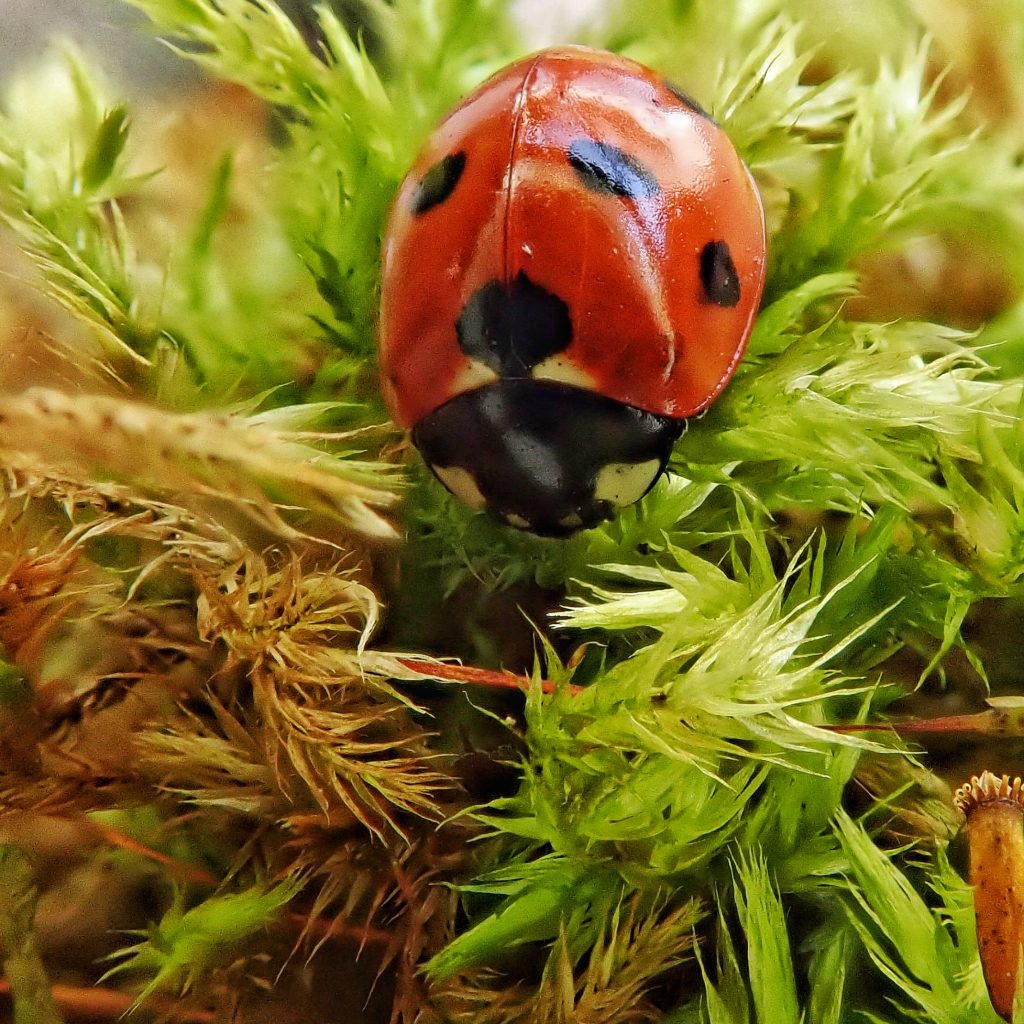
I was photographing Bryophytes in a friend’s courtyard when I saw this lady beetle on a patch of Homalothecium fulgescens moss. This time of year the bugs are still scarce, so it makes me happy when I do find one. Doubly so when it’s one of the very few of the 20 or so lady beetles in our region that I can immediately identify, at least when they’re in their standard form. The seven black spots on the elytra and two large white ones near the head on the sides of the pronotum are diagnostic for 7-spotted Lady Beetles. Since septempunctata actually means ‘seven spotted’ in Latin, I consider this to be a valid common name for this species. Because it’s still a lot to type scientists doing research on this lady beetle usually abbreviate that to C-7.
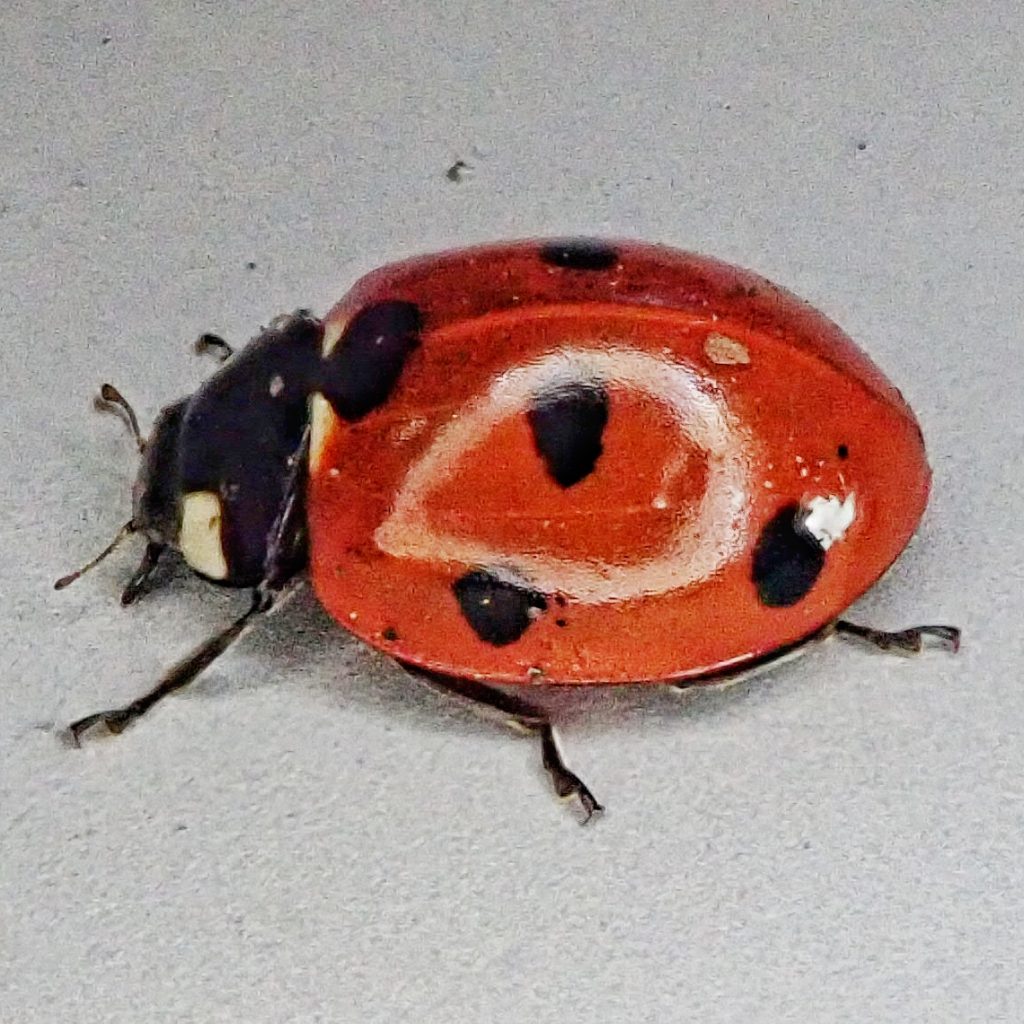
This pretty little lady beetle is non-native, and wasn’t thought to be invasive. In fact efforts to establish populations in the US as a biocontrol agent against aphids were mostly failures from 1951-71. Then in 1973 an established population was found in Hackensack, New Jersey, although those bugs are thought to have come from an accidental introduction. But from there they have spread to most of temperate North America.
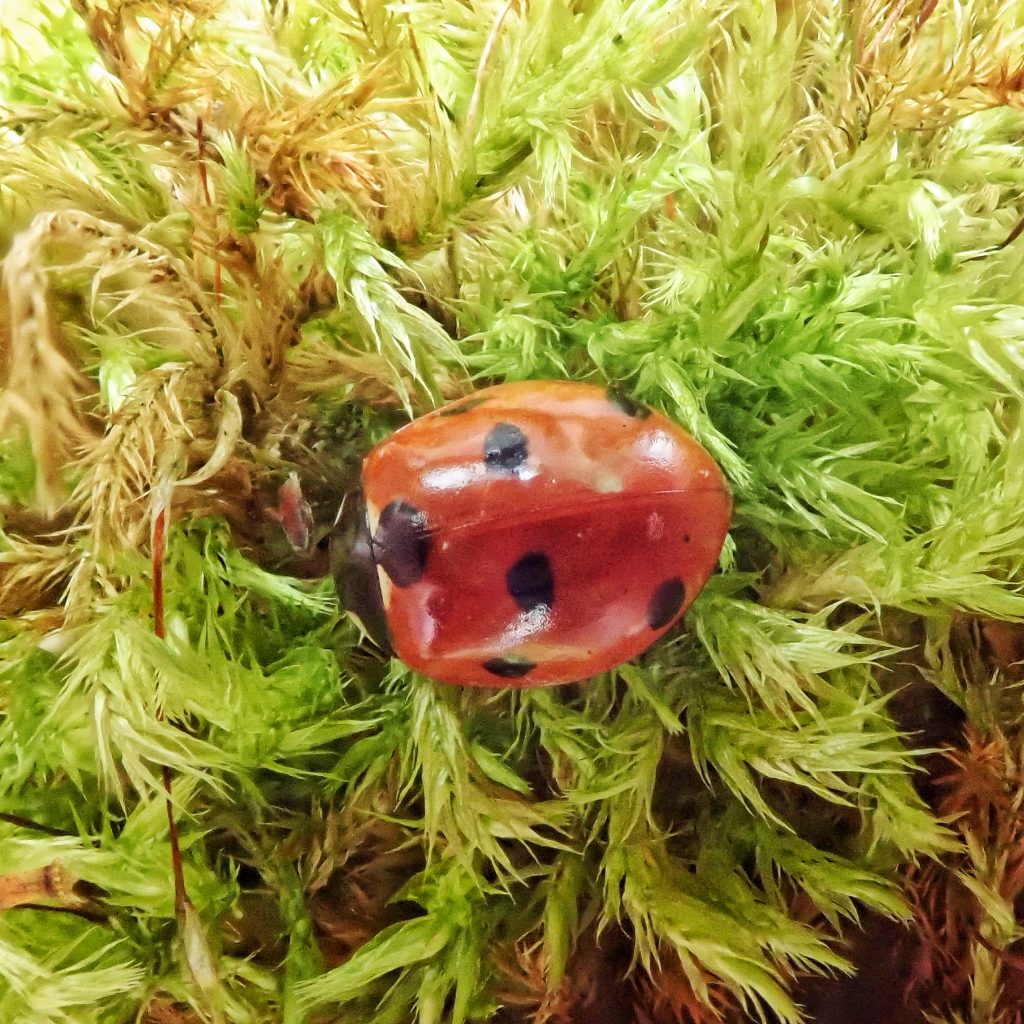
And this is not without repercussions for native species of lady beetles, because they out compete and out reproduce the natives. But, unlike the Asian ladybird beetle (Harmonia axyridis), which is a far bigger culprit (along with pesticides and habitat loss) in the decline of native species, 7-spotted Lady Beetles are not aggressive and do not attack the native lady beetles.
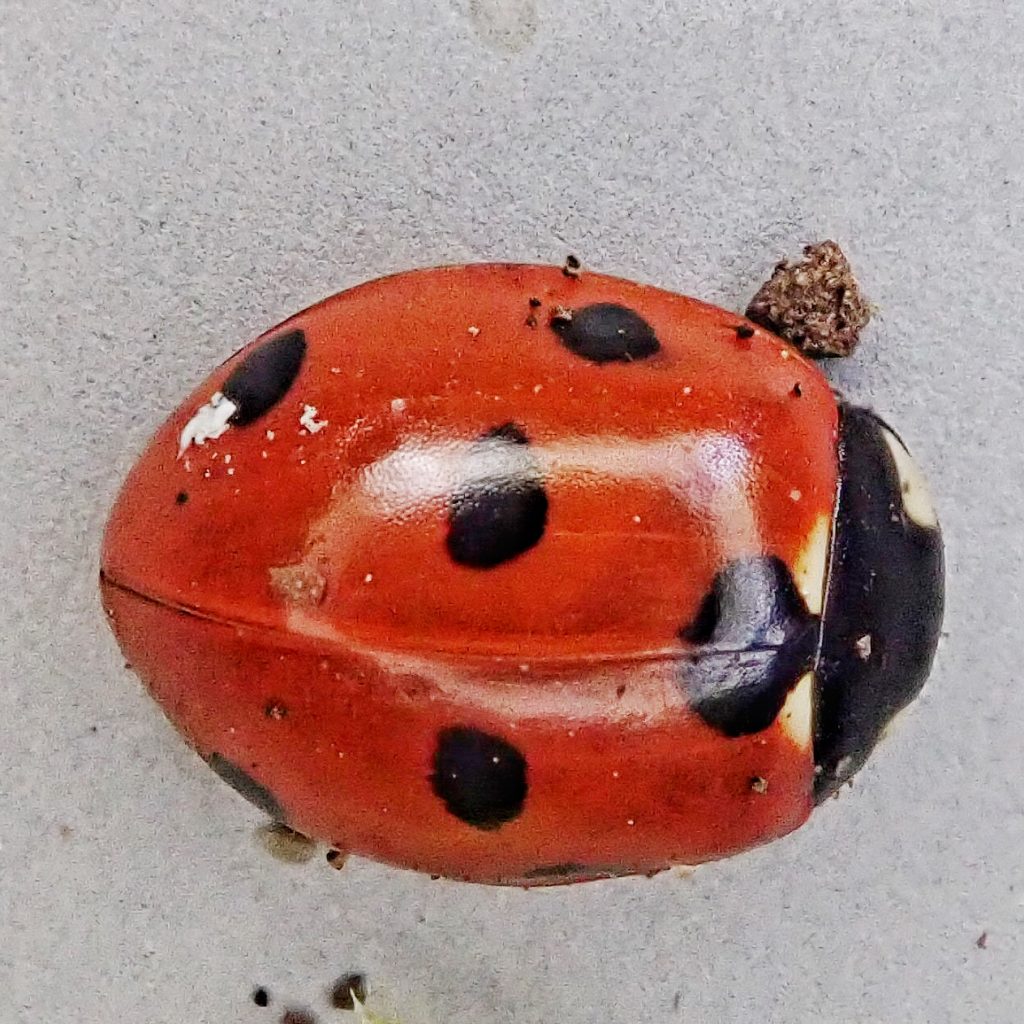
7-spotted Lady Beetles are very adept at sensing chemical signatures in their environment. They utilize olfactory communications to broadcast the location of suitably sheltered sites for overwintering, since the aggregations insure a large and diverse breeding population when they exit diapause.
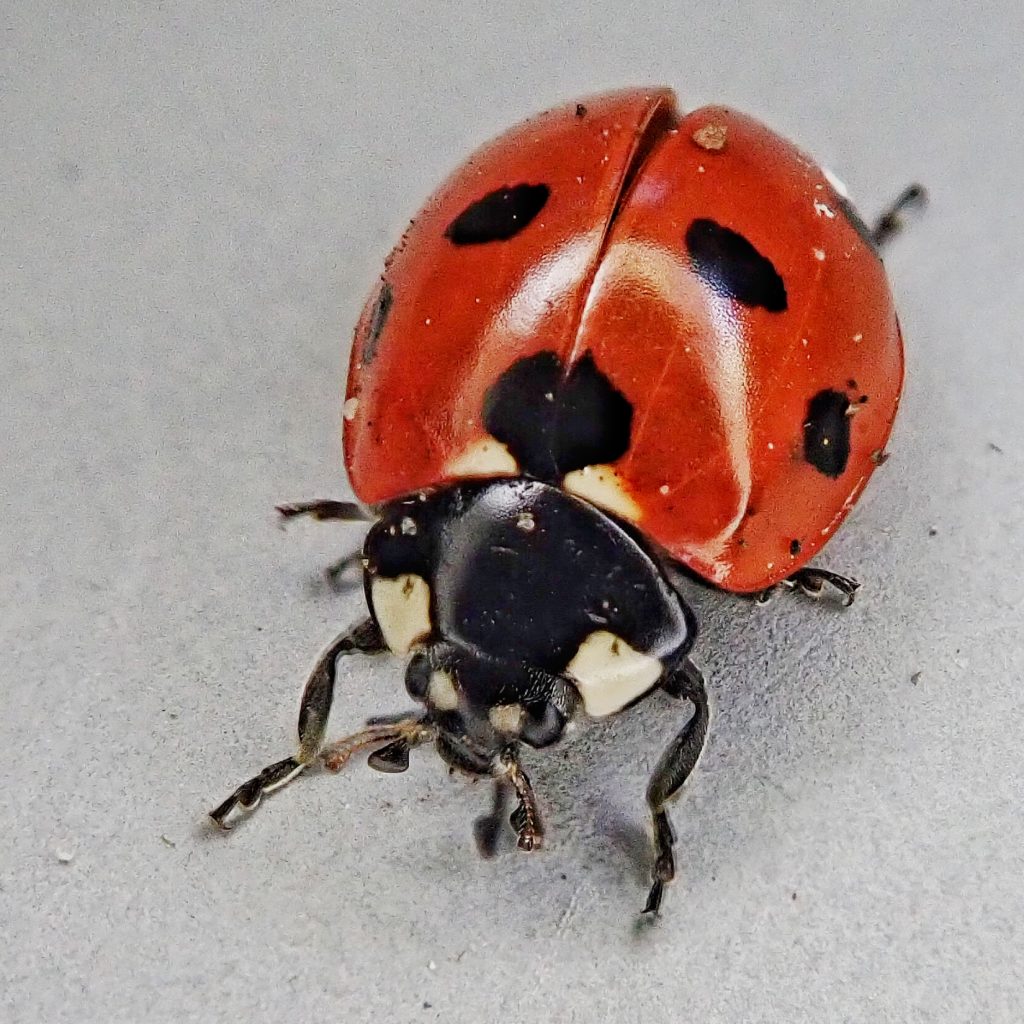
They also can sense, and are attracted to the alarm pheromones emitted by aphids when they are being attacked, chemicals designed to warn away other aphids. And Coccinella septempunctata can even register the defense and stress chemicals produced by plants when they are suffering from aphid depredation.
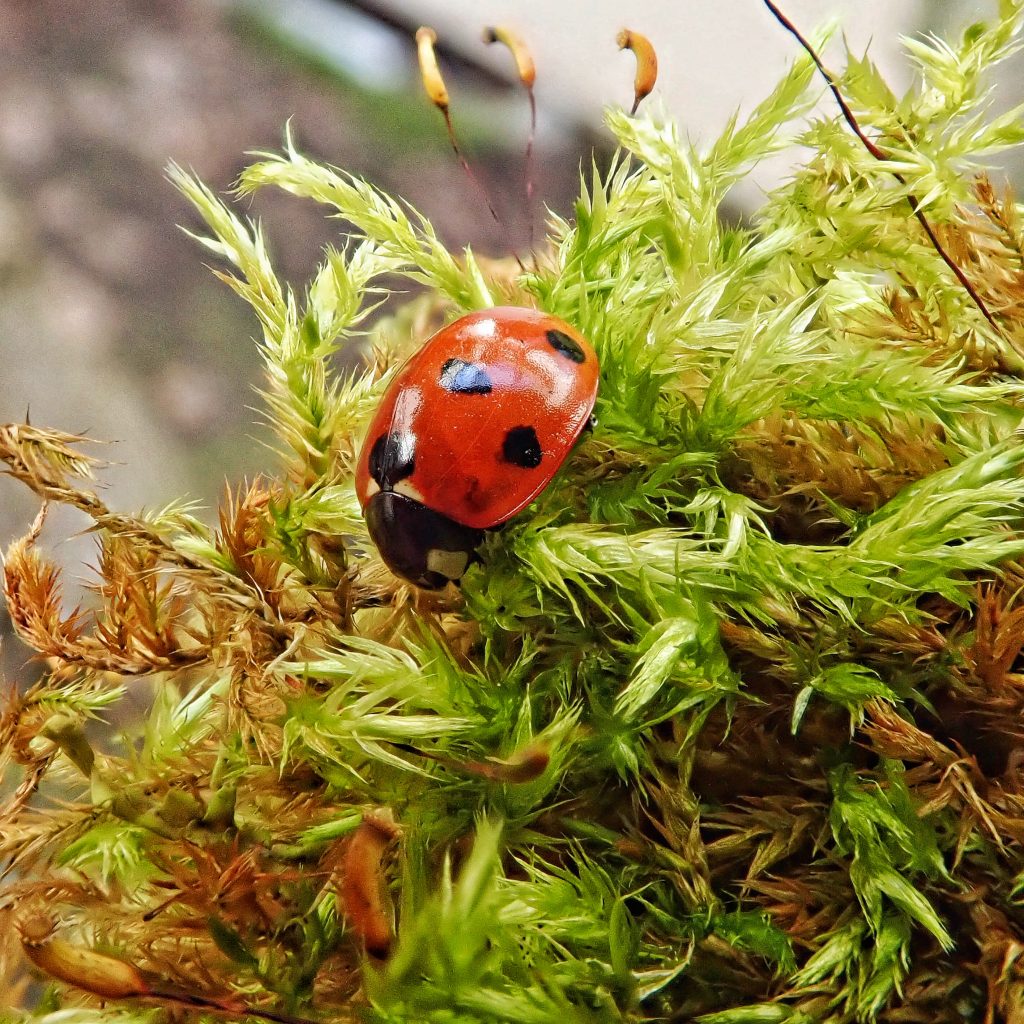
Description– Average sized lady beetle, red orange with a black pronotum ; fairly large white spots on the sides of the pronotum; usually has seven large black spots on the elytra, three on each elytron and one even larger spot at the forward junction of the elytra, which has white on the forward margin; but can have anywhere from 0-9 black spots; ventral side is a uniform black.
Similar species– Almost all species of lady beetles have significant variation in their patterning (maculation), but in it’s usual maculation the 7-spotted Lady Beetle is unmistakable; Harmonia axyridis can mimic almost every lady beetle we have, but usually has an orange border on the ventral side; other red orange, black-spotted lady beetles have more spots, or a white w at the rear of the pronotum, or a white margin at the front of the pronotum or other additional white markings on the pronotum.
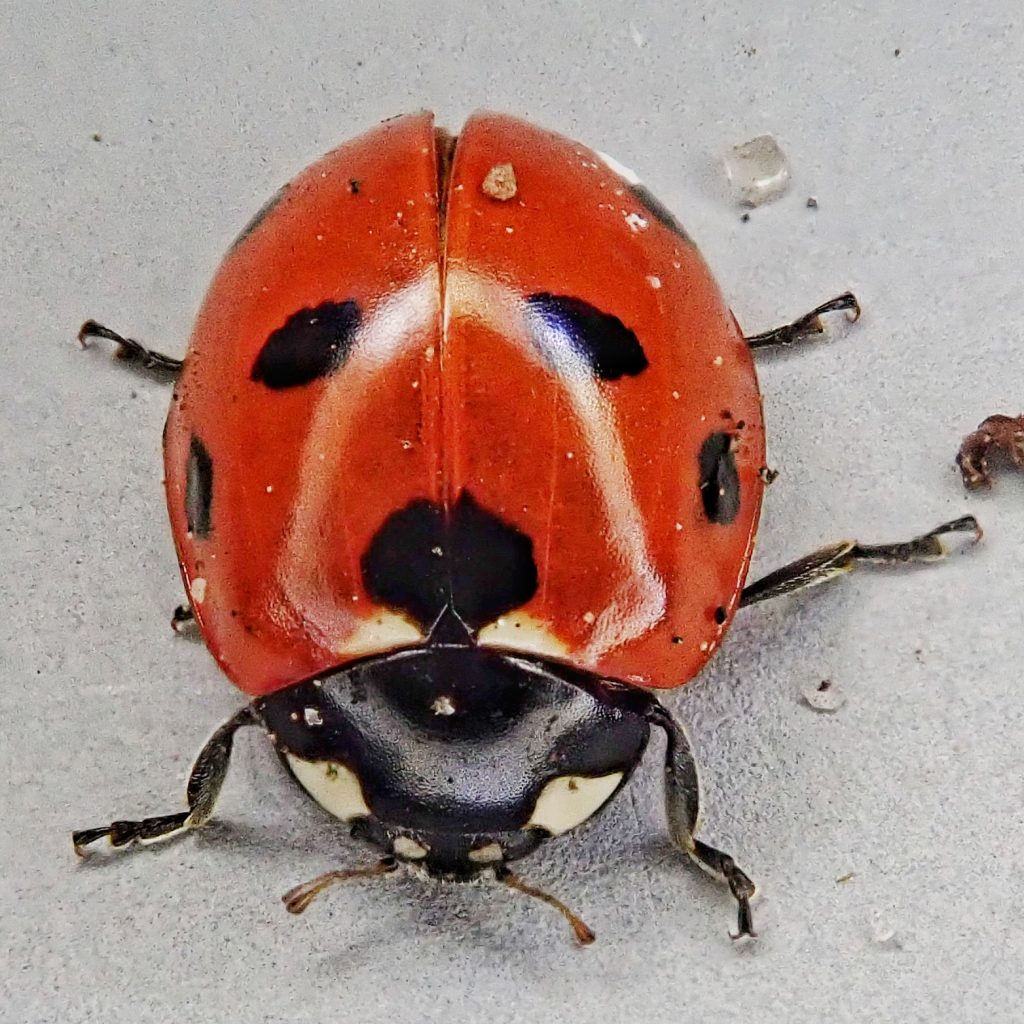
Habitat– Wherever there are aphids and other scale insects, which means, potentially, anywhere.
Range-Northern Hemisphere; not native to North America; region wide in suitable habitat.
Eats– Larva feed on scale insects (primarily aphids); Adults do so also, as well as feeding on pollen and nectar.
Eaten by– Flies in the family Phoridae, and some Eulophid and Brachionid wasps, parasitize the larvae of this species; the parasitic Brachionid wasp Dinocampus coccinellae injects an egg into the abdomen of adult (or rarely larval) female (but occasionally male) lady beetles of this genus, and the larval wasp feeds on the fat stores and reproductive organs of the lady beetle. When it pupates it partially paralyzes the lady beetle, spins a cocoon, and the zombie lady beetle protects it against predation until it ecloses; surprisingly, up to 1/5 of lady beetles survive this process; adult Coccinella septempunctata secrete poisonous alkaloids and other noxious fluids from the joints in their legs, which makes them unappetizing for a meal, although many insectivores may try to eat them once. Larvae are preyed upon by many insectivores, including conspecific broodmates when aphid numbers are low.
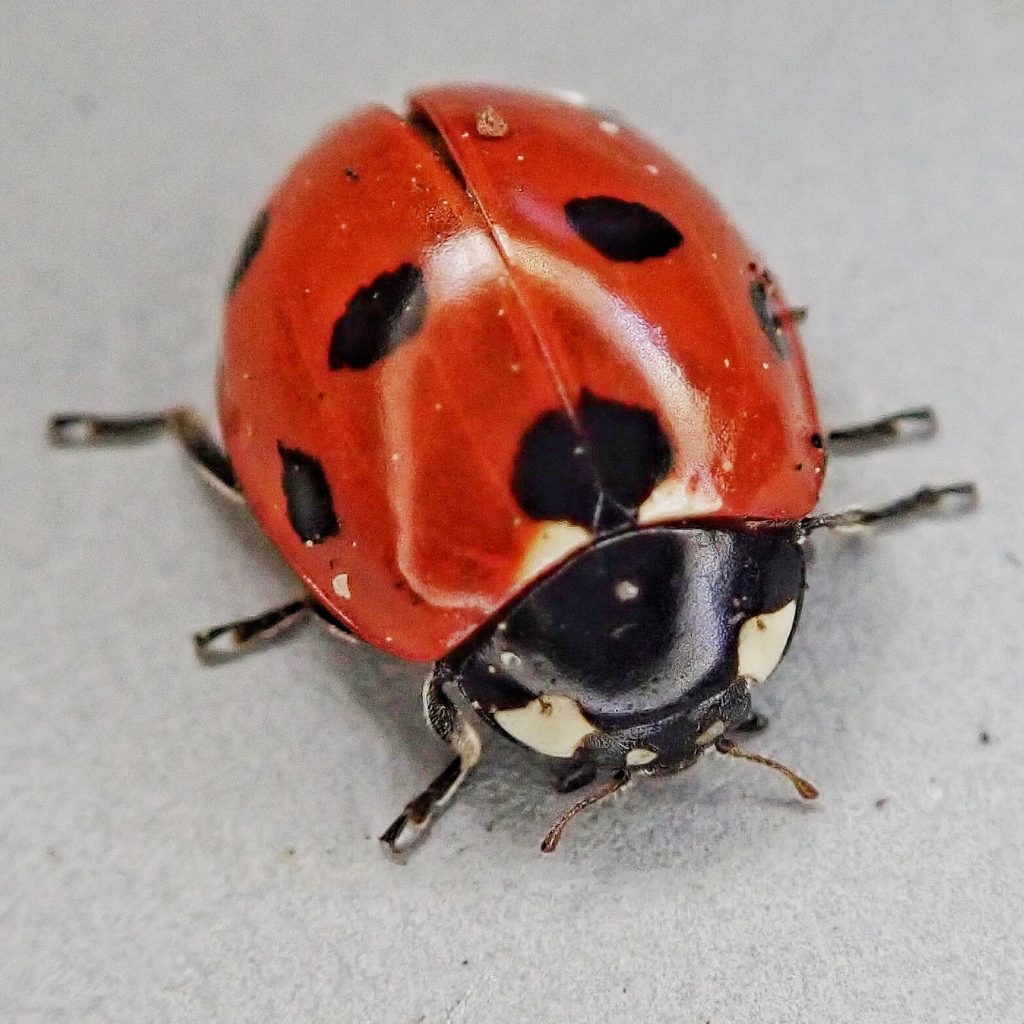
Reproduction– Females lay their eggs in aphid rich areas; in an attempt to avoid outstripping the food source they use olfactory cues to avoid laying eggs near other conspecific clusters, and usually only lay 15 eggs in a cluster; females lay 250-500 eggs in their lifetime; breeding can happen throughout the active period of the adults (though it is most common in the spring and summer), and females sometime overwinter with stored sperm; males and females mate with multiple partners.
Adults active– Adults enter diapause during winter in aggregations in sheltered locations, and are active from March to November in our region.
Etymology of names–Coccinella is from the Latin for scarlet, referring to the most common ground color of lady beetles in this genus. The specific epithet septempunctata means ‘7 spotted’ in Latin, and refers to the seven spots on the elytra. September has the same root word, because in the ancient Roman calendar, which only had 10 months, September was the 7th month.
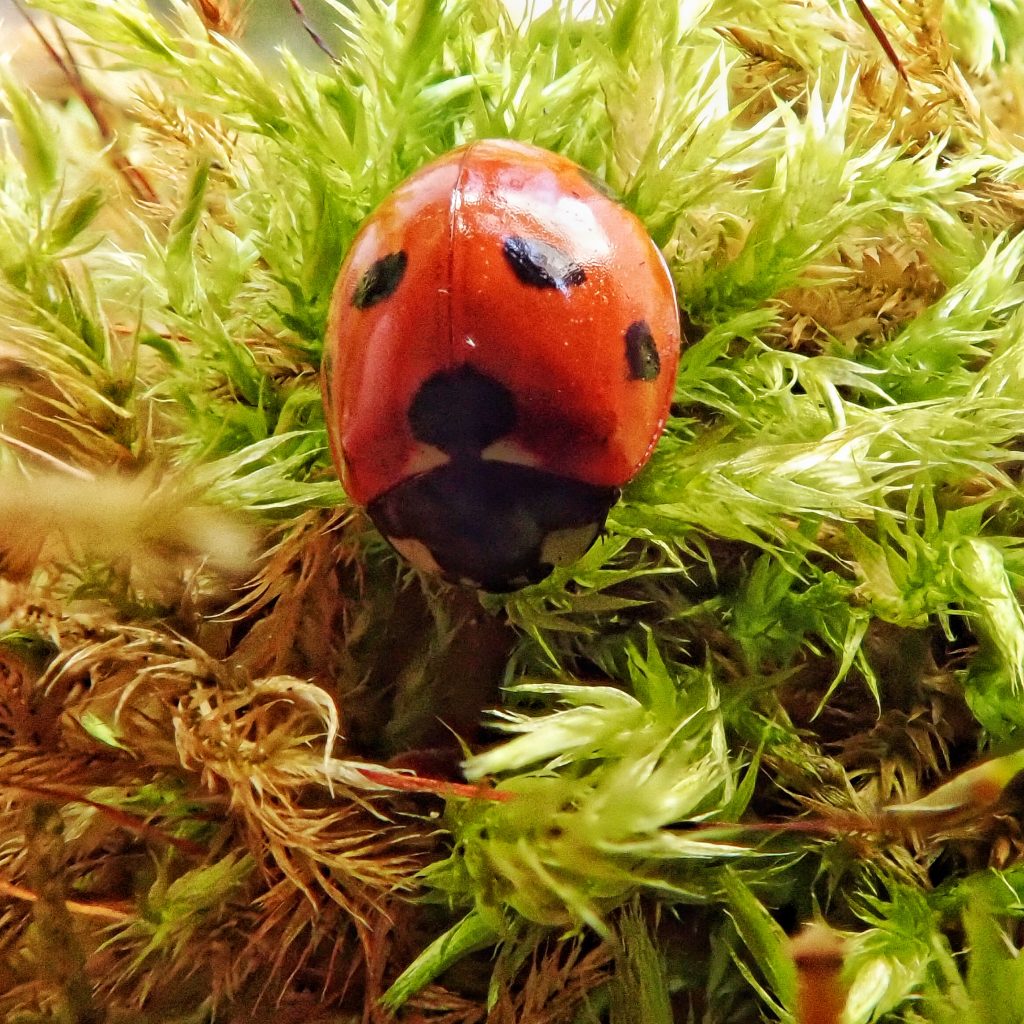
https://animaldiversity.org/accounts/Coccinella_septempunctata/
https://bugguide.net/node/view/3543
https://www.cabi.org/isc/datasheet/11733
https://wiki.bugwood.org/Coccinella_septempunctata
https://en.m.wikipedia.org/wiki/Coccinella_septempunctata
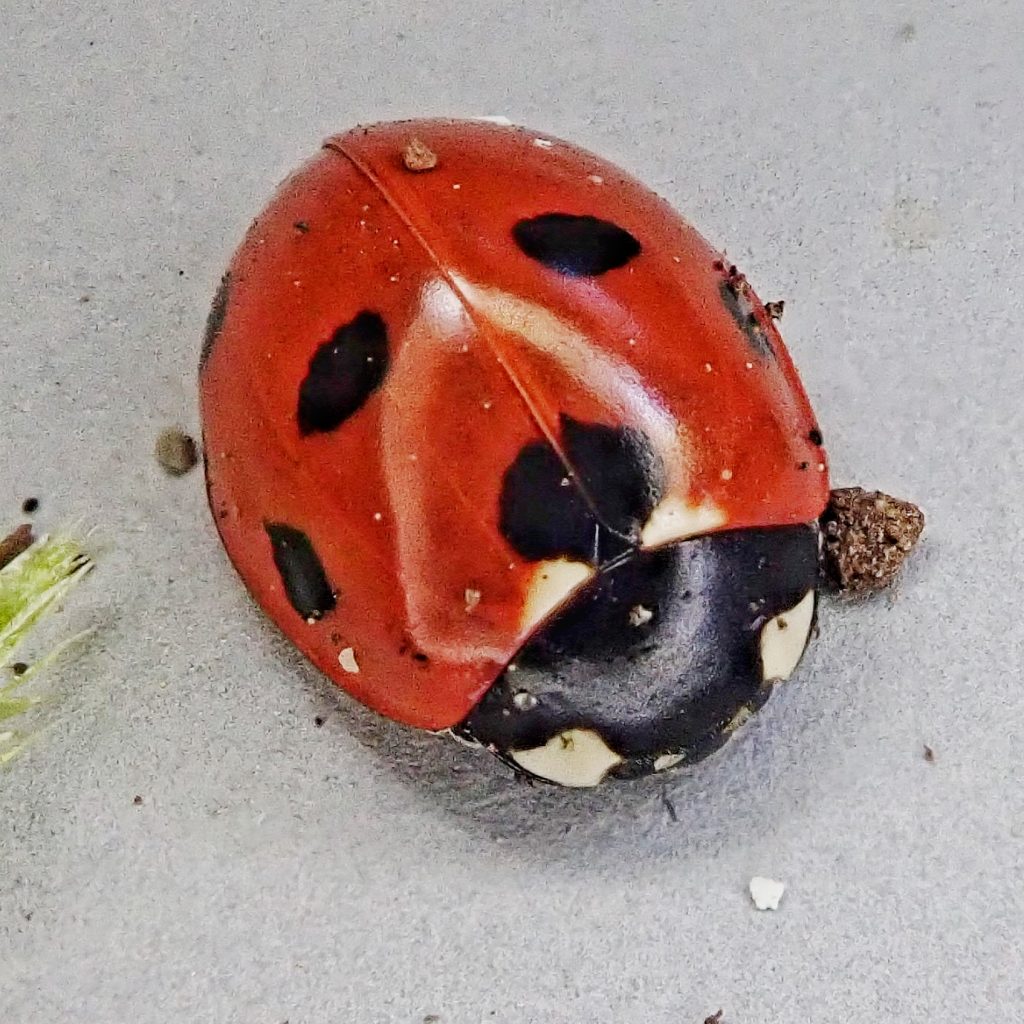
Who knew that ladybugs lead such complex lives! Very interesting! Thank you ☺️